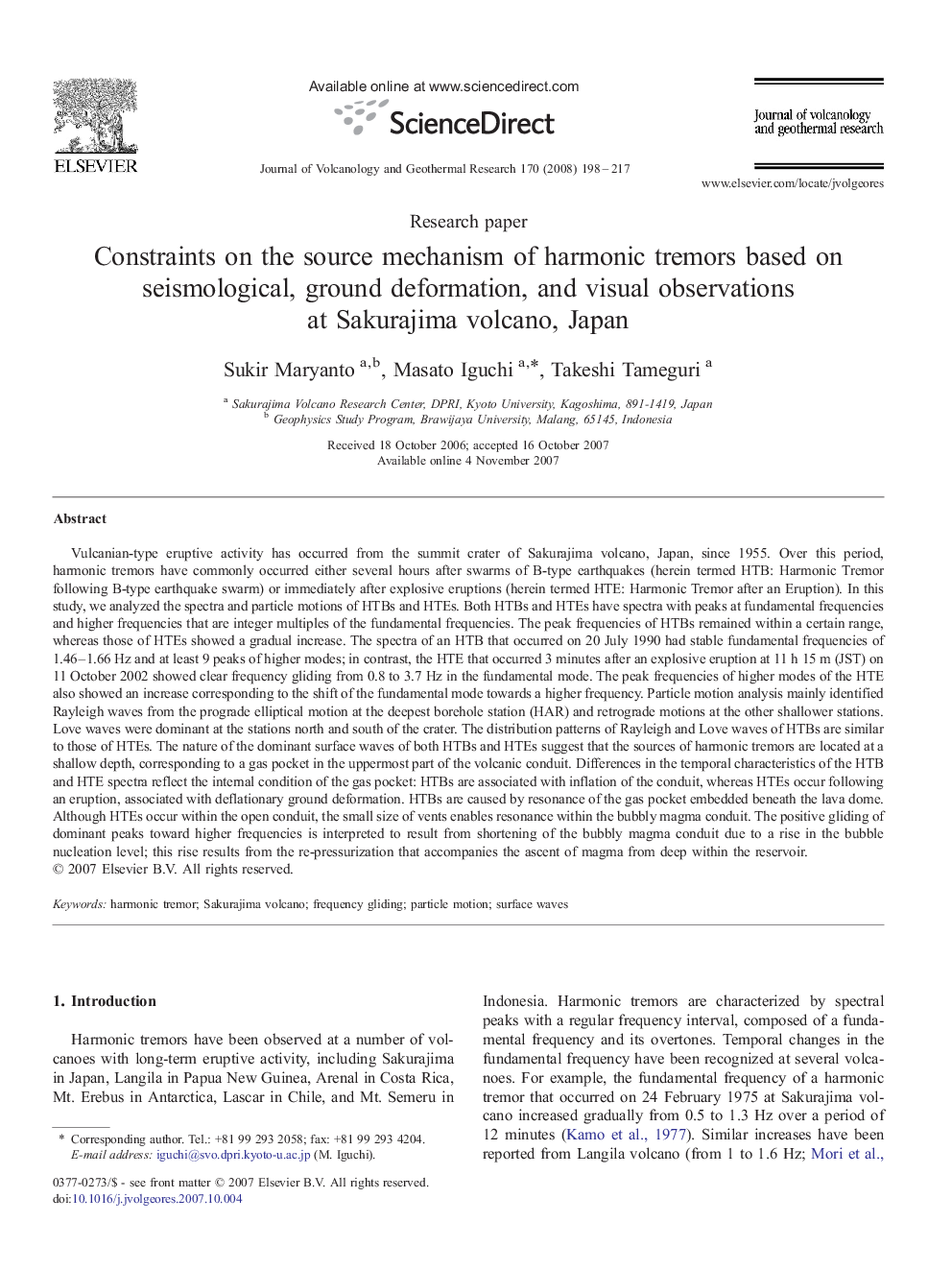| کد مقاله | کد نشریه | سال انتشار | مقاله انگلیسی | نسخه تمام متن |
|---|---|---|---|---|
| 4714750 | 1638453 | 2008 | 20 صفحه PDF | دانلود رایگان |

Vulcanian-type eruptive activity has occurred from the summit crater of Sakurajima volcano, Japan, since 1955. Over this period, harmonic tremors have commonly occurred either several hours after swarms of B-type earthquakes (herein termed HTB: Harmonic Tremor following B-type earthquake swarm) or immediately after explosive eruptions (herein termed HTE: Harmonic Tremor after an Eruption). In this study, we analyzed the spectra and particle motions of HTBs and HTEs. Both HTBs and HTEs have spectra with peaks at fundamental frequencies and higher frequencies that are integer multiples of the fundamental frequencies. The peak frequencies of HTBs remained within a certain range, whereas those of HTEs showed a gradual increase. The spectra of an HTB that occurred on 20 July 1990 had stable fundamental frequencies of 1.46–1.66 Hz and at least 9 peaks of higher modes; in contrast, the HTE that occurred 3 minutes after an explosive eruption at 11 h 15 m (JST) on 11 October 2002 showed clear frequency gliding from 0.8 to 3.7 Hz in the fundamental mode. The peak frequencies of higher modes of the HTE also showed an increase corresponding to the shift of the fundamental mode towards a higher frequency. Particle motion analysis mainly identified Rayleigh waves from the prograde elliptical motion at the deepest borehole station (HAR) and retrograde motions at the other shallower stations. Love waves were dominant at the stations north and south of the crater. The distribution patterns of Rayleigh and Love waves of HTBs are similar to those of HTEs. The nature of the dominant surface waves of both HTBs and HTEs suggest that the sources of harmonic tremors are located at a shallow depth, corresponding to a gas pocket in the uppermost part of the volcanic conduit. Differences in the temporal characteristics of the HTB and HTE spectra reflect the internal condition of the gas pocket: HTBs are associated with inflation of the conduit, whereas HTEs occur following an eruption, associated with deflationary ground deformation. HTBs are caused by resonance of the gas pocket embedded beneath the lava dome. Although HTEs occur within the open conduit, the small size of vents enables resonance within the bubbly magma conduit. The positive gliding of dominant peaks toward higher frequencies is interpreted to result from shortening of the bubbly magma conduit due to a rise in the bubble nucleation level; this rise results from the re-pressurization that accompanies the ascent of magma from deep within the reservoir.
Journal: Journal of Volcanology and Geothermal Research - Volume 170, Issues 3–4, 10 March 2008, Pages 198–217